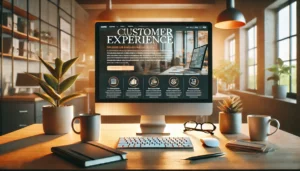3 Old-School Customer Loyalty Strategies that Still Work
08 Aug 2018 By: Jessica Eyre
Updated
When one thinks about customer loyalty, the mind likely goes to the mom and pop stores in small towns. You know, those one-stop-shops that have everything from groceries to hardware, also doubling as the town’s gossip hub. Everyone knows everyone, and you’re treated like family.
Fortunately, it doesn’t matter if you have four employees or thousands; no matter what the size, any company can achieve the customer loyalty of a small-town shop.
When you are catering to such a large client base, it can be easy to lose sight of the value of customer loyalty. The “if we lose one, there’s others out there” mentality is a toxic and expensive business strategy. In fact, your customers are getting privy to large corporations and tech-driven companies—there has been a huge resurgence in the importance of personalization, expertise, and stewardship offered by small businesses. And in supersaturated markets, it’s easy for a customer to leave you for a competitor.
So, how can your large or tech-dependent organization begin to bring the focus back to customer loyalty? Let’s look at some time-tested business truisms to consider and then explore a few habits to avoid.
Old-School Customer Loyalty Tactics
Sending Positive and Impactful Messages
Think about your reaction when different commercials come on. A comedic advertisement might put a viewer in a good mood, and a commercial showing shelter animals might inspire someone to go adopt. When you are able to evoke these types of emotions, you are cultivating a connection with your potential buyers.
However, this strategy isn’t just limited to saying nice things in ads or showering your buyers in flowery customer service. It’s important to show your customer base that you care about them and their communities and that you are conducting business responsibly to elicit these emotions, too.
And there’s proof in the pudding. In an interview with Georgetown University, Scott Dobroski, associate director of communications at Glassdoor, highlights a core philosophy:
“Our CEO, Robert Hohman, has often said that ‘being a great company means being a good steward in the community,’” Dobroski says, “and there are studies that back that up. Companies who give back are also more productive and efficient.”
Being a steward can take many forms, such as giving back to a community or dedicating your product or service to be produced with society or the environment in mind. Shoe company Tom’s gives a portion of its earnings to those in need, and clothing company Patagonia uses recycled materials and repair services for its clothing. As you are probably aware, these companies both have an incredibly strong customer loyalty base.
Establishing Yourself as a Thought Leader
Everyone wants to surround themselves with people who help them learn and grow, both personally and professionally. In order to make a big impact on your buyers and peers, you need to prioritize your position as a thought leader.
What exactly is a thought leader, though? Michael Brenner of Marketing Insider Group defines it as “having the answers to the biggest questions on the minds of your buyers.” That means whatever your area of expertise, you want to be the go-to disseminator of insight and trends in your space.
This edification of your following largely comes in the form of content. Blogs, ebooks, webinars, and videos are just a few examples of the medium you can provide to your customers. You want it to be informative, yet compelling and entertaining if at all possible. One fun example is dairy co-op Tillamook—they recently did a series called #TheIceCreamDebate; experts and people on the street weighed in on whether you should bite into or lick ice cream (for the curious, the verdict was licking).
Offering a live chat service such as HelpSquad on your website is also a very convenient way to spread knowledge to your customers. If someone has a question or a concern, you or one of our expert live chat agents can address them in seconds without the need to be put on hold.
Treating Your Employees Well

It’s no secret that providing your workers with a rewarding and passionate working environment makes good business sense. However, the number of companies that make a concerted effort to accomplish this is fairly dismal. A 2017 Deloitte report found that nearly 80 percent of executives identify the employee experience as an important aspect of the business. Of those, however, only 22 percent felt that their effort to do so was excellent.
But what kinds of things complete the formula of a happy workforce? Happiness Lab CEO David Bellamy cites five points, which he has dubbed the 5 Conditions for Happiness. According to Happiness Lab, employees want the following:
- To be a part of a company that is doing something impacting the world and/or society positively
- To work in a transparent environment, including upper management and coworkers
- To have a degree of autonomy in their work (independence, no one is breathing down their neck)
- To have resource and emotional support from coworkers and upper management
- To have a sense of constant development (an environment that promotes self-betterment)
If you have happy employees, you will have happy customers. Employees will be more willing and positive about their interactions with customers, in turn producing a better relationship with the brand.
Things to Avoid
Ignoring Your Customers’ Thoughts
The adage “the customer is always right” has been around since the early 20th century. It has been utilized by countless companies as a rule of thumb for great customer service. But some detractors believe that the saying is fundamentally incorrect and can actually hurt your business.
However right or wrong it is, you should still keep an ear to the ground when your customer has something to say. Customer comments and concerns can contain data and information that can be insightful for strategy-tweaking and improvements. Great examples of how to easily do this are to offer employee surveys and employ a live chat service such as HelpSquad on your website. Live Chat conversations can be automatically archived, which over time can provide a wealth of data and insights into what your customers are experiencing and saying.
Providing Insufficient Accommodations
No one likes to wait. If you are not able to keep an open line of communication between you and your customers, people will grow impatient and frustrated; eventually, they will leave you for your competitor.
Make sure you have the correct customer service accommodations in place to deal with the volume of business accordingly. This is yet another instance that a live chat service on your website can be a game-changer.
Misunderstanding Your Brand
If you are unsure about who you are as a company and as a brand, how can you expect your customers to buy in and be loyal followers? Achieving brand awareness starts with having an acute understanding of who is interested in what you’re offering.
Take a deep dive into the purpose of your business—why do you exist? What need do you fill? And who are the ones that want that need filled? Once you have developed a philosophy behind your endeavors, you won’t need to explain customer loyalty to your customer; the product or service will do it for you.

